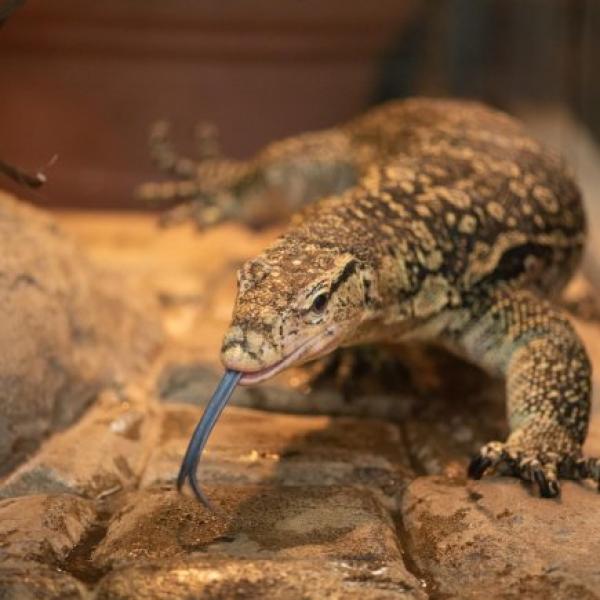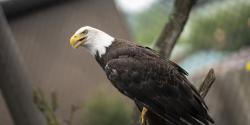After the Komodo dragon, the common water monitor is the second-largest lizard in the world.
True to its name, this water-loving reptile moves gracefully underwater while using its tail as a rudder and can hold its breath for long periods of time. It is also an expert tree climber!
Scientific Name: Varanus salvator
Conservation Status: Least Concern
Size: Most adult water monitors are roughly 5 feet long, with a tail about 1½ times the body length.
Weight: Anywhere from 40 to 90 pounds, with males usually twice as large in mass.
Median Life Expectancy: Unknown









